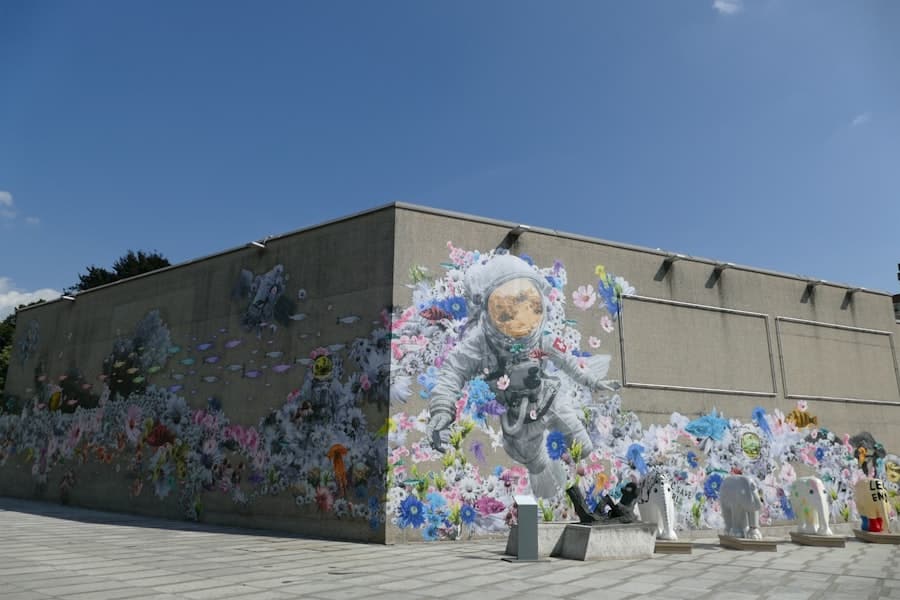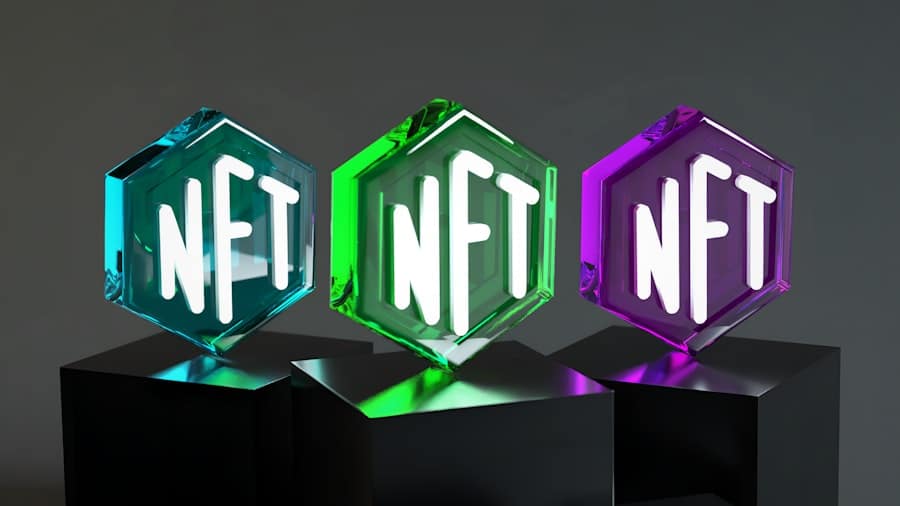The advent of Non-Fungible Tokens (NFTs) has ushered in a transformative era for both the music and digital art industries. NFTs are unique digital assets verified using blockchain technology, which ensures their authenticity and ownership. Unlike cryptocurrencies such as Bitcoin or Ethereum, which are fungible and can be exchanged on a one-to-one basis, NFTs represent distinct items that cannot be replicated.
This uniqueness has made them particularly appealing for artists and musicians seeking to monetize their work in innovative ways. The rise of NFTs has sparked a revolution in how creators distribute, sell, and engage with their audiences, fundamentally altering the landscape of ownership in the digital realm. In the context of music and digital art, NFTs provide a new framework for artists to assert control over their creations.
Traditionally, artists have relied on intermediaries such as record labels or galleries to manage their work, often resulting in diminished profits and limited creative freedom. With NFTs, artists can directly connect with their fans, offering exclusive content and experiences that were previously unattainable. This shift not only empowers creators but also fosters a more intimate relationship between artists and their audiences, as fans can now own a piece of the art or music they love in a way that is verifiable and secure.
Key Takeaways
- NFTs are revolutionizing the way music and digital art ownership is perceived and traded.
- The music industry is experiencing a significant impact from NFTs, with new opportunities for artists and creators.
- NFTs play a crucial role in digital art ownership, providing a secure and transparent way to buy and sell digital art.
- The future of NFTs presents both challenges and opportunities, including issues of sustainability and accessibility.
- NFTs are reshaping the concept of ownership in the digital age, offering new possibilities for creators and collectors.
The Impact of NFTs on the Music Industry
The music industry has experienced significant disruption due to the rise of streaming services, which have altered how artists earn revenue. In this context, NFTs present a compelling alternative for musicians seeking to reclaim control over their work. By minting their music as NFTs, artists can sell limited editions of songs, albums, or even concert tickets directly to fans.
This model allows musicians to bypass traditional distribution channels, ensuring that a larger share of the profits goes directly to them. For instance, the musician Grimes made headlines when she sold a collection of digital artworks and music as NFTs for nearly $6 million, demonstrating the lucrative potential of this new medium. Moreover, NFTs enable musicians to offer unique experiences that enhance fan engagement.
For example, an artist might sell an NFT that grants the owner access to exclusive behind-the-scenes content, private concerts, or even personalized messages. This not only creates a new revenue stream but also deepens the connection between artists and their supporters. The ability to offer such exclusive perks is particularly appealing in an era where fans are increasingly seeking personalized interactions with their favorite musicians.
As a result, NFTs are not just reshaping how music is sold; they are redefining the entire artist-fan relationship.
The Role of NFTs in Digital Art Ownership
In the realm of digital art, NFTs have emerged as a groundbreaking solution to longstanding issues surrounding ownership and copyright. Traditionally, digital art has been easily replicable, making it challenging for artists to assert ownership over their work. However, with the introduction of NFTs, artists can now create verifiable proof of ownership for their digital creations.
Each NFT is linked to a specific piece of art on the blockchain, ensuring that the original creator is recognized and compensated for their work. This has led to a surge in interest from both established and emerging artists who see NFTs as a way to monetize their digital creations effectively. The impact of NFTs on digital art ownership extends beyond mere financial gain; it also fosters a sense of community among artists and collectors.
Platforms like OpenSea and Rarible have emerged as marketplaces where artists can showcase their work and collectors can discover new talent. This democratization of access allows artists from diverse backgrounds to reach global audiences without the need for traditional gallery representation. Furthermore, the ability to program royalties into NFTs means that artists can continue to earn from their work every time it is resold, creating a sustainable income model that was previously unattainable in the digital art space.
Challenges and Opportunities for NFTs in the Future
Despite the promising potential of NFTs in music and digital art ownership, several challenges must be addressed for this technology to reach its full potential. One significant concern is the environmental impact associated with blockchain technology, particularly those that rely on proof-of-work systems like Ethereum. The energy consumption required for minting and trading NFTs has raised alarms among environmentalists and artists alike, prompting calls for more sustainable practices within the NFT space.
As awareness grows, there is an opportunity for developers to explore alternative blockchain solutions that prioritize energy efficiency without compromising security. Another challenge lies in the legal landscape surrounding NFTs. As this technology continues to evolve, questions regarding copyright infringement, intellectual property rights, and consumer protection are becoming increasingly complex.
Artists may find themselves navigating uncharted territory when it comes to licensing their work as NFTs or dealing with unauthorized reproductions. However, this challenge also presents an opportunity for legal frameworks to adapt and evolve alongside technological advancements. By establishing clear guidelines and protections for creators, stakeholders can foster a more secure environment for artists and collectors alike.
NFTs and the Concept of Ownership in the Digital Age
The rise of NFTs has prompted a reevaluation of what ownership means in the digital age. Traditionally, ownership has been associated with physical objects—tangible items that can be bought, sold, or traded. However, NFTs challenge this notion by introducing a new paradigm where digital assets can hold intrinsic value despite their intangible nature.
This shift raises philosophical questions about the nature of ownership itself: Can one truly “own” a digital file? With NFTs providing verifiable proof of ownership on the blockchain, it becomes possible to assert ownership over digital creations in a way that was previously unfeasible. Furthermore, NFTs have the potential to democratize ownership by allowing individuals to invest in art and music at various price points.
Fractional ownership models enable multiple collectors to own shares of high-value digital assets, making it possible for more people to participate in the art market without needing substantial financial resources. This democratization not only broadens access but also fosters a sense of community among collectors who share a common interest in supporting artists and their work.
The Potential for NFTs to Revolutionize the Art and Music Markets
The potential for NFTs to revolutionize the art and music markets is immense. By providing artists with new avenues for monetization and engagement, NFTs are reshaping how creative industries operate.
Similarly, visual artists can sell unique pieces or series as NFTs, allowing them to retain control over their work while reaching global audiences through online marketplaces. Moreover, the integration of augmented reality (AR) and virtual reality (VR) technologies with NFTs opens up exciting possibilities for immersive experiences. Artists can create interactive installations or virtual galleries where collectors can showcase their NFT art in digital spaces.
This fusion of technology not only enhances the value proposition for collectors but also allows artists to push creative boundaries in ways that were previously unimaginable. As these technologies continue to evolve, they will likely play a pivotal role in shaping the future landscape of both music and digital art.
Legal and Ethical Considerations for NFTs in Music and Digital Art
As the NFT market expands rapidly, legal and ethical considerations are becoming increasingly important for both creators and collectors. One pressing issue is copyright infringement; with the ease of minting digital assets as NFTs, there is a risk that individuals may tokenize works without proper authorization from original creators. This raises questions about intellectual property rights and how they are enforced within decentralized systems like blockchain.
Artists must remain vigilant about protecting their work while navigating this new landscape. Additionally, ethical considerations surrounding environmental sustainability cannot be overlooked. The energy consumption associated with certain blockchain networks has led to significant carbon footprints, prompting discussions about responsible practices within the NFT space.
Artists who are conscious of their environmental impact may choose to mint their work on eco-friendly platforms or advocate for changes within existing systems to promote sustainability. As awareness grows around these issues, there is an opportunity for stakeholders to collaborate on solutions that prioritize both artistic integrity and environmental responsibility.
Predictions for the Future of NFTs in Music and Digital Art Ownership
Looking ahead, it is clear that NFTs will continue to play a significant role in shaping the future of music and digital art ownership. As technology evolves and becomes more accessible, we can expect an influx of new platforms and tools designed specifically for creators and collectors alike. These innovations may include enhanced user interfaces that simplify the minting process or advanced analytics tools that help artists understand market trends and audience preferences.
Furthermore, as legal frameworks adapt to accommodate this burgeoning market, we may see increased protections for creators against copyright infringement and unauthorized use of their work as NFTs. This could foster greater confidence among artists when entering the NFT space, encouraging more creators to explore this avenue for monetization and engagement with their audiences.
As artists continue to embrace this technology and explore its possibilities, we are likely to witness an exciting evolution in how we perceive ownership in the digital age.
In the rapidly evolving landscape of digital ownership, NFTs are carving out a significant niche, particularly in the realms of music and digital art. As artists and musicians explore new ways to monetize their work and connect with audiences, the potential of NFTs to revolutionize these industries is becoming increasingly apparent. A related discussion can be found in the article What Are the Marketing Technologies for 2023?, which delves into the technological advancements shaping various sectors, including the creative industries. This article provides insights into how emerging technologies, like NFTs, are influencing marketing strategies and consumer engagement in the digital age.
FAQs
What are NFTs?
NFTs, or non-fungible tokens, are digital assets that represent ownership or proof of authenticity of a unique item or piece of content, such as art, music, videos, and other digital files.
How do NFTs work in the music industry?
In the music industry, NFTs can be used to represent ownership of digital music files, albums, or even concert tickets. Artists can sell NFTs as a way to directly connect with their fans and offer unique, limited-edition digital content.
What is the future of NFTs in music and digital art ownership?
The future of NFTs in music and digital art ownership is expected to continue growing as more artists and creators explore the potential of blockchain technology for selling and distributing their work. NFTs offer a new way for artists to monetize their digital creations and engage with their audience.
Are there any challenges or concerns with NFTs in the music industry?
Some concerns with NFTs in the music industry include issues of copyright and intellectual property rights, as well as the environmental impact of blockchain technology. Additionally, there is a need for greater understanding and education about NFTs and their potential impact on the music industry.



